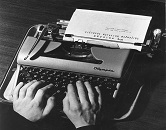INSTRUCTIONS FOR SOVIET AGENCIES
(for official use)
"Concerning Data under the Heading 'Catholicism in Lithuania and the Present'
"The Procedure for Collecting Information:
"Data for the above subject are to be collected for scientific purposes in order to become better acquainted with the dynamics of present-day Catholicism as well as of other confessions. The data are to be collected in a composite manner by investigating the following: the clergy's sermonizing and other forms of pastoral work, the role played in the religious community by those who are the most active within the church and their influence on the activities of the ministers of the cult, the material basis (churches, appurtenances of the cult, choirs, etc.) of religious propaganda; and by observing how the cult is modernized.
"Sermonizing:
"To be selected for listening to sermons are those active atheists who have sufficient education. Without participating in the religious rites, yet behaving in a civilized manner, the atheist is to listen attentively to sermons and subsequently reconstruct their contents without adding anything on his own. The description of the sermon must include the following data: (a) the location at which the sermon was delivered (rayon, church), the time (date, hour), the name and surname of the preacher and where he is from; (b) the contents of the sermon. The gospel is to be briefly recounted. The contents of the sermon are to be reconstructed in detail, as completely and accurately as possible by strict adherence to the principle of objectivity. It is absolutely impermissible to insert one's own comments or conclusions into the contents of the sermon. After the contents of the sermon are described, one's observations, comments, and conclusions may be presented and designated as 'remarks'; (c) the form of the sermon: whether it was read from notes or an outline was used or whether he spoke without notes and without an outline; the duration of the sermon; the consistency of the stated ideas; other means used by the preacher to influence the believers.
"How many believers participated in the services (including men, women, youths, school-age children) must be specified in the remarks. Also to be indicated is who assisted in the services (adults or children). The religious rites are to be described and their solemnity and emotionalism (organ, choir, orchestra, soloists, etc.); the extent of the participation by believers (whether they sing hymns, pray from prayer books, make responses to the priest, and similarly); and who collected the contributions made during the services (whether a clergyman or one of the more active members of the church)
"Other Pastoral Work of Clergymen:
a) The clergyman and the believers. Is the clergyman active in pastoral work? If so, how is this activity expressed? Does he differentiate his activity according to separate groups of believers (men, women, youths, children) ? Does he comply with Soviet laws concerning religious cults? If not, concrete instances of violations of the law should be specified. What pecularities are present in this clergyman's pastoral work? What do the believers think of their clergyman?
b) The clergyman and children. Does the clergyman attempt to make the religious parents feel more responsible for the religious upbringing of their children? If so, then by what means? How are the children of believing parents prepared for catechization and the sacrament of confirmation?
c) The clergyman's existence and his personal life. What are the clergyman's relations with the local intellectuals? Describe the cultural life of the clergyman (television, radio, telephone, the newspapers he subscribes, the books he reads, his outings to the theater, concerts, etc.).
"The Most Active Members of the Church:
"The basic demographic data must be specified for the religious community's "council of twenty," its executive body, the members of the auditing commission, and those who participate in the church choir: sex—men, women; age—18 to 25, 26 to 30, etc.;education—primary, whether completed or not; secondary, whether completed or not; higher, whether completed or not, etc.; social position— blue-collar worker, collective-farm worker, white-collar worker, pensioner, or homemaker; occupation: the duties of able-bodied active church members in production collectives are to be specified; participation of the most active church members in public life: the most active church members who participate actively in public life—amateur cultural activities, political clubs, etc.—are to be pointed out.
"In addition, the relationship of the most active church members with the pastor and other clergymen must be described. Does the executive committee of the religious community and the auditing commission make use of the rights granted them by Soviet laws concerning religious cults? Or has the pastor usurped these rights? What is the role of the unorganized active church members (devout little old ladies and existing nuns) in the parish.
"The Material Basis of the Religious Community:
a) The house of worship. The condition of the exterior and the surroundings (the churchyard) of the house of worship must be described (whether it is in good repair or not, whether the churchyard is neat or not, whether there are flower beds, rock gardens, etc.). The interior of the house of worship is to be described (whether it has been painted, decorated, electrified, and whether it has a public-address system, etc.). Perhaps there are features of modernism in the arrangement and decoration of the church interior?
b) Appurtenances of the cult. The bells and their use; liturgical vestments, their condition (whether orderly and clean, or worn and neglected); the attributes of religious processions (baldachins, lanterns, portable altars, banners, and others; their condition).
"The believers' opinion regarding modernization of the cult:
"What do believers think of the introduction of their native language into the services? What do they think of the shortening of the time for fasting before receiving communion to one hour? What do they think of other liturgical innovations?"









